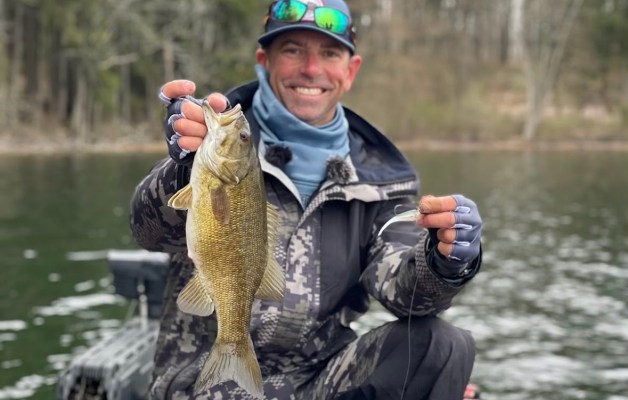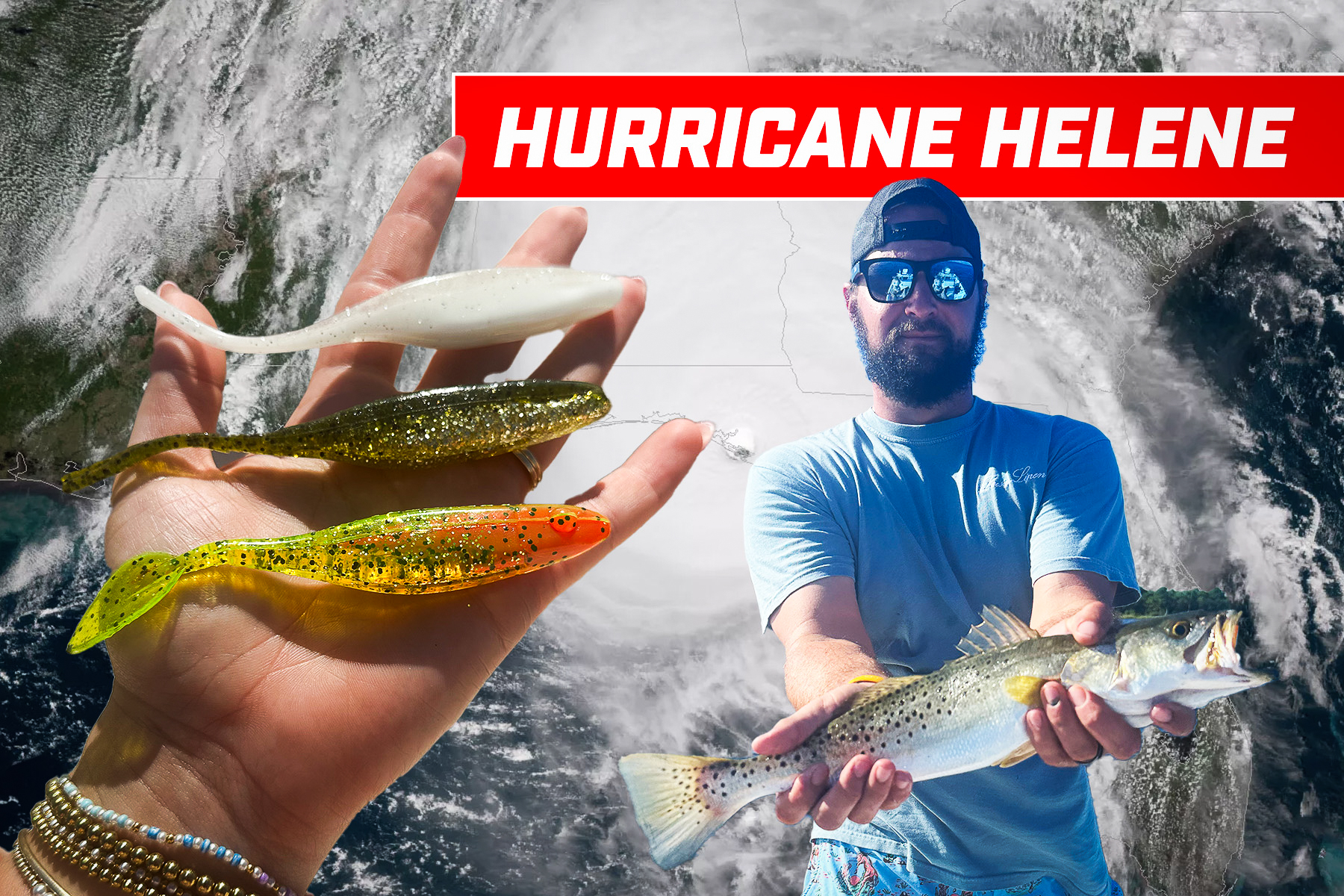
As I sit down to write this, Hurricane Helene is bearing down on the Big Bend region, growing stronger by the hour. With the storm heading directly for the coast, I know this article may quickly become outdated depending on the severity of the impact. But before the weather took a turn for the worse, my husband Josh and I seized the opportunity to get out on the water for some incredible late-summer fishing. It turned out to be one of our most memorable trips yet, filled with the thrill of trout, surprise catches, and the anticipation of the unknown.
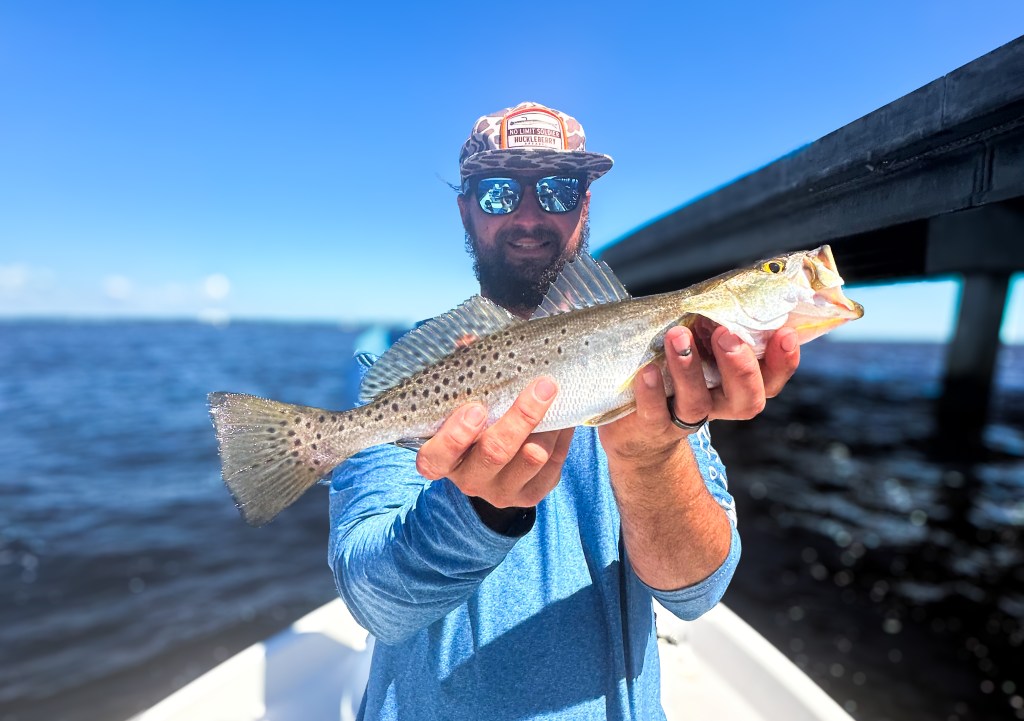
Understanding trout behavior in late summer
Saltwater trout, known for their sensitivity to environmental changes, exhibit unique behavioral patterns in the late summer months. As the water temperatures rise, trout tend to move into deeper, cooler areas, seeking relief from the heat and more consistent oxygen levels. However, when conditions change rapidly—like just before a storm—these fish can become highly active, feeding aggressively as the pressure drops. This pre-storm feeding frenzy is something experienced anglers look forward to, as it often results in some of the best bites of the season.
During late summer, the trout’s behavior is closely tied to the tides and weather patterns, which dictate where they hunt for baitfish. Warmer waters push them toward structure, like bridge pilings, where they find shelter and ambush their prey. In the Big Bend, these trout prefer a diet of small fish, shrimp, and crustaceans, making soft plastics and jigs, especially those imitating baitfish, highly effective.
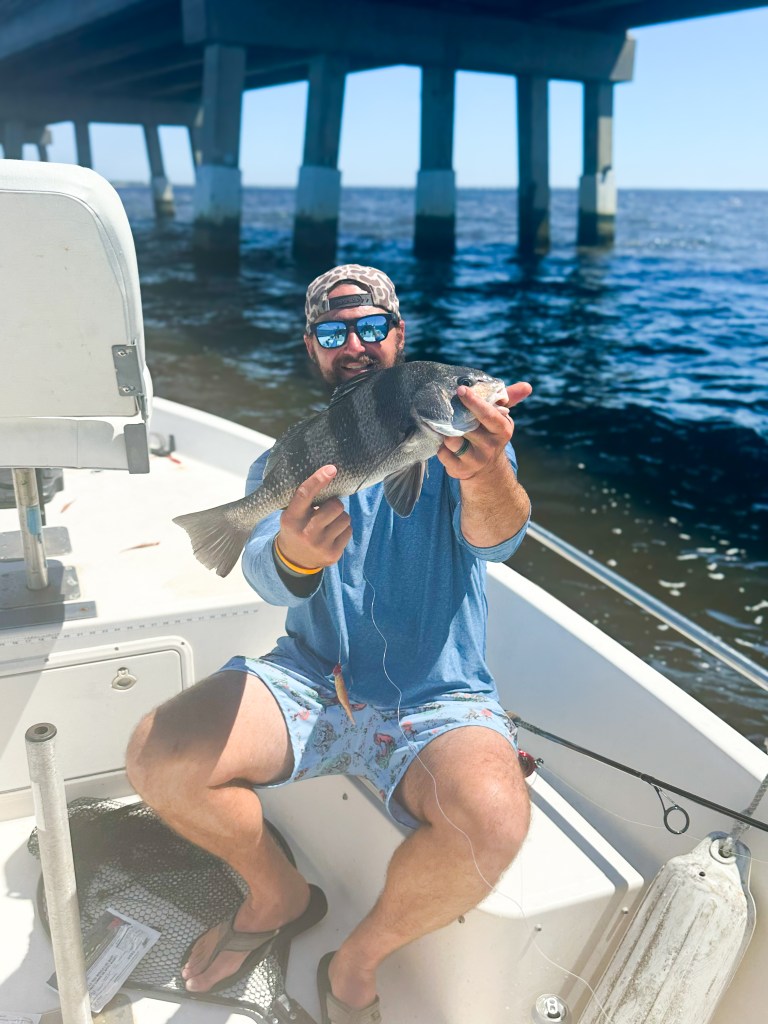
Our strategy: Fishing the crossover bridge
Our day began at the main crossover bridge that connects St. George Island to Eastpoint. This iconic fishing spot offers not only scenic views but also an excellent variety of species, from saltwater trout to catfish, sheep’s head, and more. The deeper waters around the bridge pilings create the perfect hunting ground for trout, while the strong currents that move through the area help fish conserve energy by positioning themselves strategically to ambush prey.
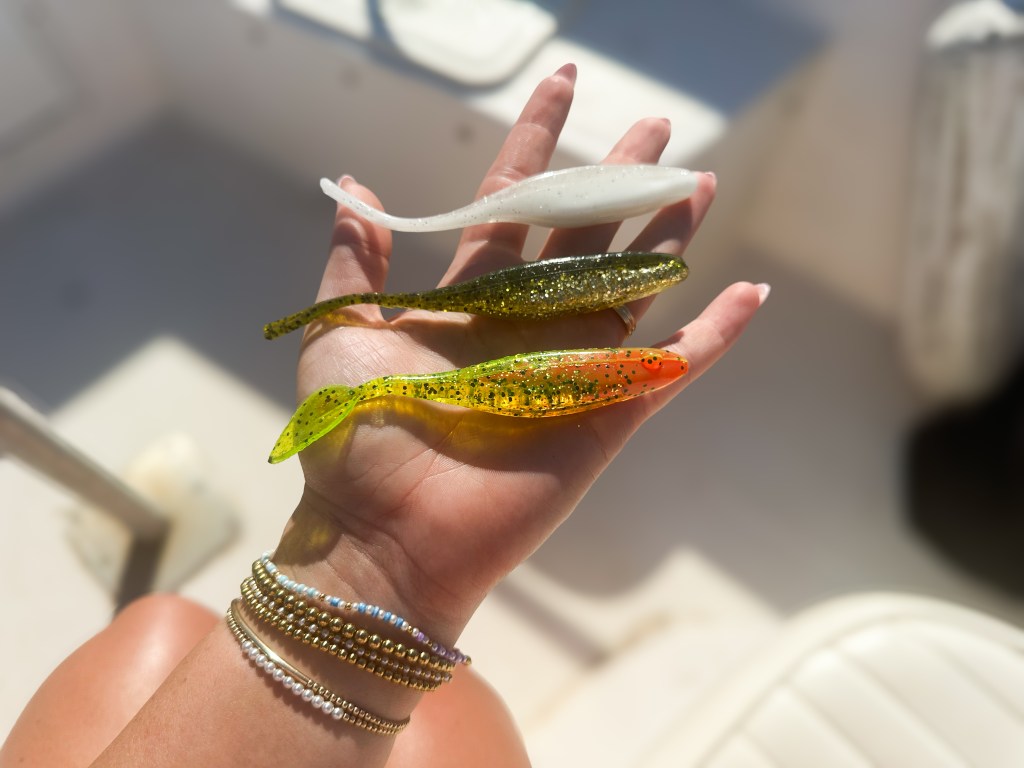
For this trip, we used a Big Bite Baits D Jig, paired with a Fork Tail Jerk Minnow in a custom glow disco color. This particular color holds a special place in my heart, as it was custom-poured when my grandfather owned Big Bite Baits. While this exact color is no longer on the market, it serves as a great reference when selecting similar shades. Popular alternatives like Electric Chicken and New Penny remain highly effective in these waters. These colors mimic the appearance of baitfish and shrimp, perfect for enticing trout hiding among the bridge’s structure.
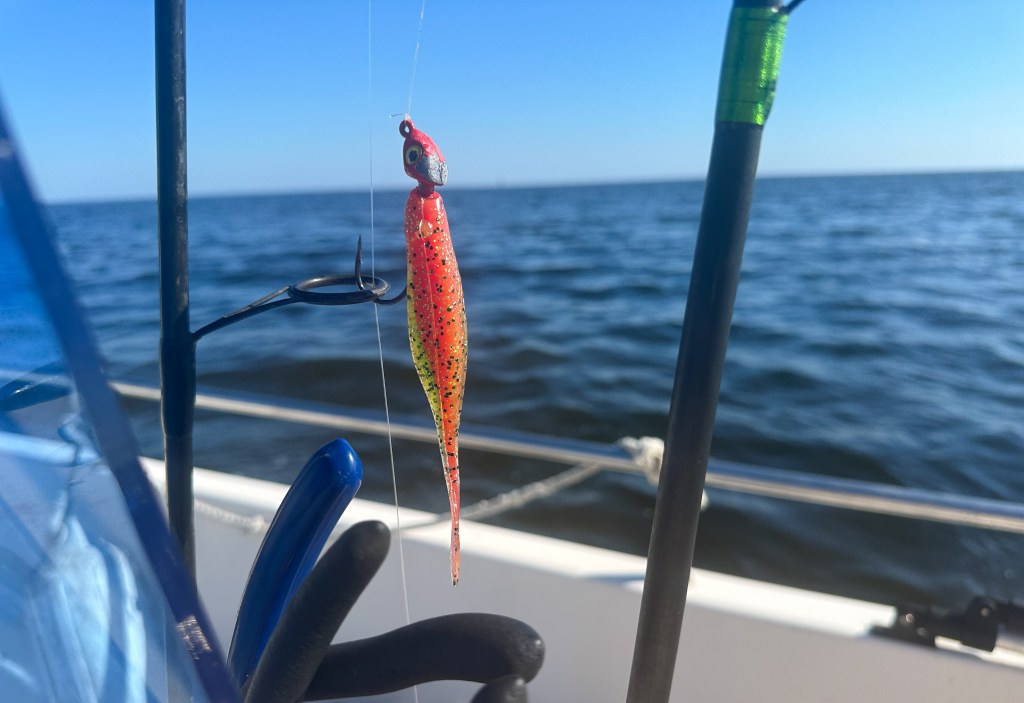
The fishing action was steady at first. We hooked several saltwater trout using a simple jigging technique, popping the jig off the bottom with a rhythmic retrieve, which mimicked the erratic movement of baitfish. Along with the trout, we were surprised to land a few catfish and even a blue crab, which was a fun and unexpected bonus. However, the most impressive surprise of the morning was catching a sheep’s head, a species known for their black and white “prison-stripe” appearance and their notorious tendency to nibble at baits without fully committing.
Sheep’s head are a challenging species to catch, as they feed primarily on crustaceans like crabs and barnacles, which they crush with their strong, human-like teeth. They prefer to stay close to structure, making them frequent visitors around bridges, docks, and jetties. While their bite is subtle and hard to detect, once hooked, they put up a tough fight. Though we didn’t specifically target sheep’s head, it was an exciting catch that added variety to our day.

Exploring the flats around Little St. George Island
As the bite slowed at the bridge, we decided to move further out to the flats surrounding Little St. George Island. This area, with its shallow grass beds and expansive flats, is perfect for targeting trout and redfish, but it also comes with its challenges. With the water depth only a couple of feet deep and thick patches of grass covering the bottom, our heavier jigs became less effective. The grass constantly caught on our lures, making it difficult to present them cleanly.

That’s when Josh had a stroke of genius. He rummaged through his tackle box and pulled out a small chrome saltwater popper—a topwater bait designed to mimic a fleeing baitfish. He tied it on and began casting across the flats, working the bait in a steady “walk the dog” retrieve, where the popper zig-zags back and forth across the surface. It wasn’t long before the water exploded with action.
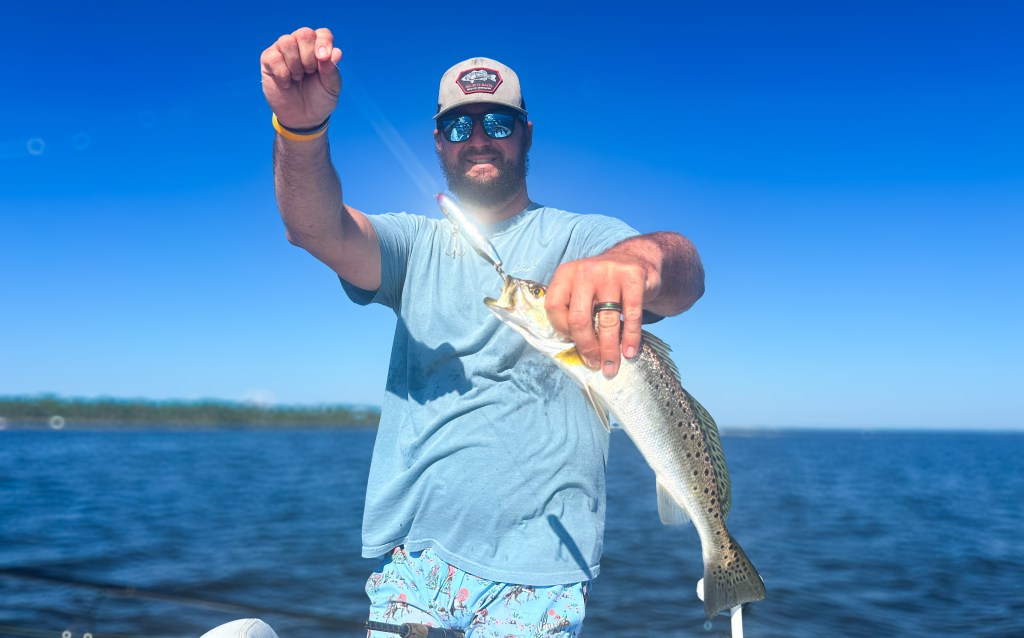
Almost immediately, trout began launching themselves at the popper, creating a surface spectacle that was both thrilling and visually stunning. There’s nothing quite like watching a fish explode on a topwater lure, and the trout were so aggressive that they were striking the bait on nearly every cast. Josh, who had the only popper in the tackle box, was on fire, and I happily sat back and watched as he landed fish after fish. The adrenaline rush of those trout hitting topwater made the entire trip worth it.
As the day began to wind down, we made one last push into the shallowest part of the flats, hoping for a final trophy catch. Redfish, another species known for inhabiting these flats, are powerful fighters and are highly sought after by anglers in the Big Bend. They move into shallower waters during the summer and early fall to hunt for crabs and baitfish before migrating to deeper waters for the winter.
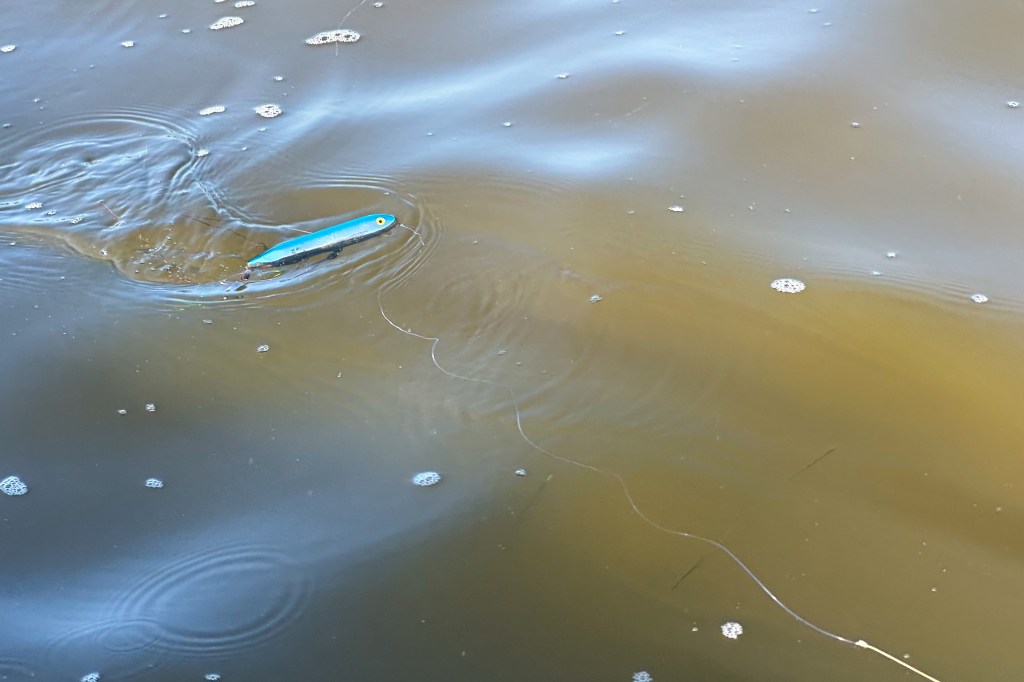
Just as we were about to call it a day, Josh hooked into a big redfish. The fight was intense, with the redfish making strong, determined runs as Josh worked to reel it in. Unfortunately, just as we were getting the fish close to the boat, it made one final surge and threw the hook. While we didn’t get a picture of this elusive red, the thrill of the catch left us buzzing for the rest of the day.
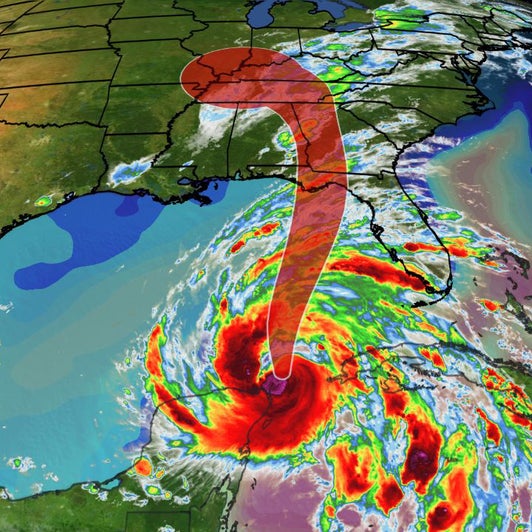
Hurricanes and the Big Bend: A history of impact
The Big Bend region is no stranger to hurricanes, and these storms leave a lasting impact on both the landscape and the local fishery. Hurricanes like Hermine in 2016 and Michael in 2018 caused widespread damage, reshaping shorelines, flooding estuaries, and even altering water salinity. These dramatic changes can have a direct effect on fish behavior and habitat. In some cases, hurricanes push fish schools into new areas or displace baitfish, causing predatory species like trout and redfish to follow.
Interestingly, while the immediate aftermath of a hurricane can make fishing challenging due to stirred-up waters and debris, the longer-term effects can be surprisingly beneficial for anglers. Hurricanes often stir up nutrients from the ocean floor, leading to increased baitfish activity. As a result, predators like trout, redfish, and snook can become more active as they follow the baitfish into different areas. However, it can take weeks or even months for the fishery to stabilize after a major storm.
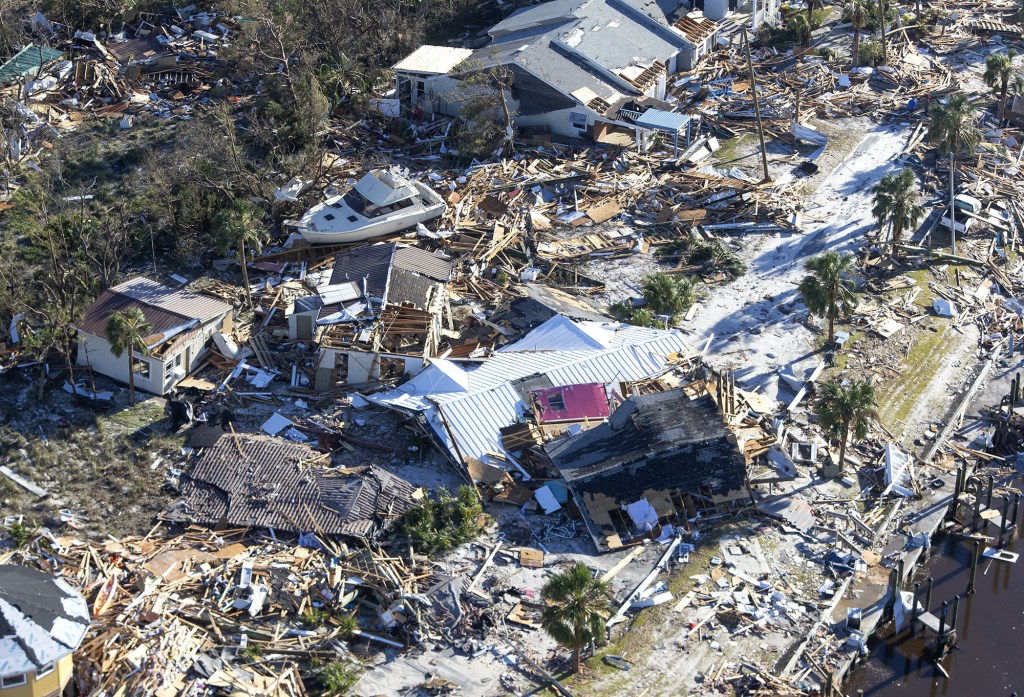
The Big Bend’s intricate network of marshes, estuaries, and flats has proven resilient to many hurricanes over the years. But each storm leaves its own mark, and it’s not uncommon for local anglers to notice changes in where and how fish are biting in the months following a major storm. As we wait to see the full impact of Hurricane Helene, we can only hope that the region recovers quickly and that the fishery remains as productive as ever.
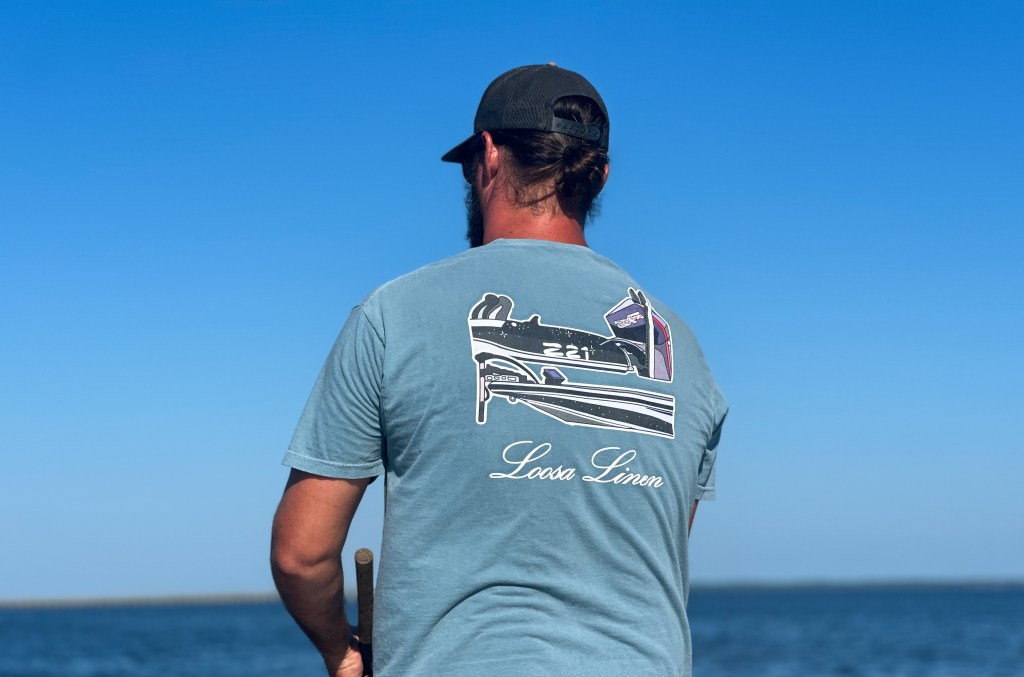
Wrapping up
Our trip to the Big Bend before Hurricane Helene was unforgettable. From the aggressive trout bite at the bridge to Josh’s exciting near-catch of a redfish on the flats, we couldn’t have asked for a better day on the water. As the hurricane approaches, we’re left reflecting on the unpredictability of both nature and fishing. With Helene’s path still uncertain, we’re praying for the safety of everyone in the storm’s path and hoping that the Big Bend’s vibrant fishery will recover quickly.
Stay safe, and remember that even in the face of uncertainty, there’s always an opportunity to make great memories on the water.



